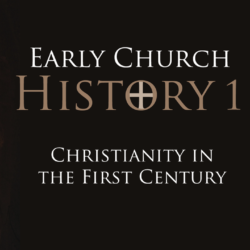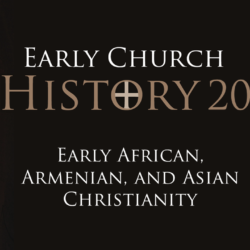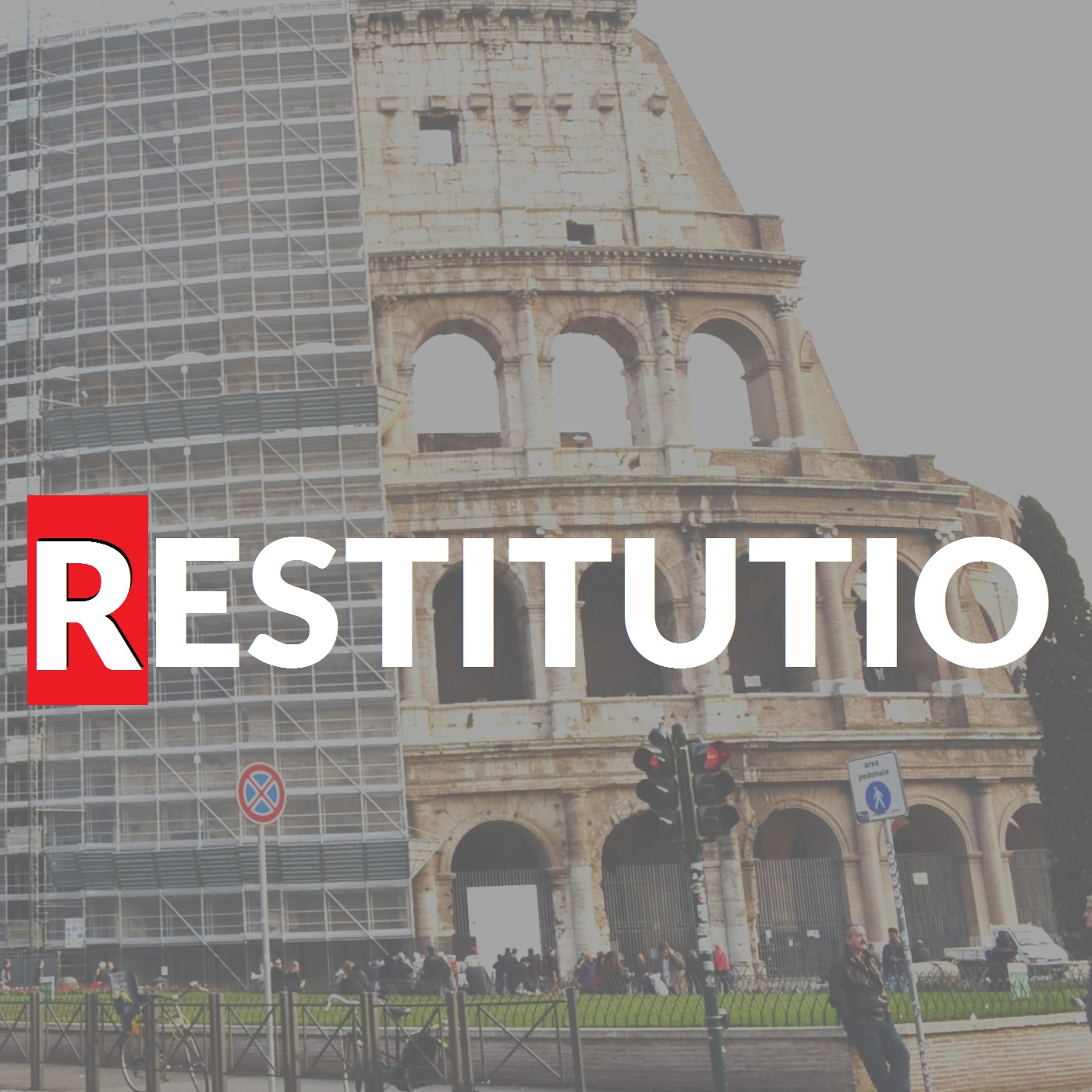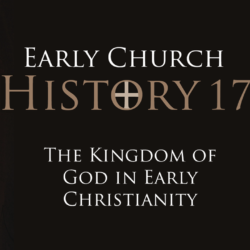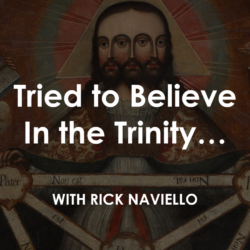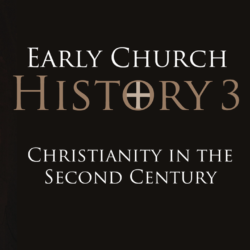Did you know that Christianity spread to Asia in the first century? At one time the Church of the East was bigger than the Roman Catholic Church. Although often overlooked, this part of the world is critical to our understanding Christianity in the last five hundred years. Our guest lecturer, Matthew Elton, guides us through an enlightening and helpful survey of the history of Asian Christianity.
This is lecture 8 of a history of Christianity class called Five Hundred: From Martin Luther to Joel Osteen.
All the notes are available here as a pdf.
—— Notes ——
Early Christianity (1st Century)
- Christianity spreads in Arabia, Persia, India.
Nestorian Schism (431)
- Nestorius was bishop of Constantinople (present day Istanbul, Turkey).
- Disagreement over unity vs. separation of human and divine natures in Christ.
- Disagreement over title of Mary: theotokos (“God-bearer”) vs. Christotokos (“Christ-bearer”).
- Nestorius accused of heresy, excommunicated, and exiled to Egypt.
- 17 other bishops also excommunicated.
- Nestorian view of Christ accepted by Church of the East (Nestorian Church).
The Church of the East (~431 to Present)
- Also called the Nestorian Church.
- Split from the western church as a result of the Nestorian Schism.
- Main power base was in Persia (present day Iran).
- Spread east into India, Nepal, Mongolia, China.
- Height of power c. 700-1000. During this time it was the largest and possibly most populous church in the world, more powerful than the Catholic church.
- Islam founded by Muhammad in early 7th
- Church of the East collapses under Muslim persecution and war, almost extinct by 1500.
- Survives today in very small “Assyrian Church of the East” in U.S. and groups active in Iraq, Syria, etc.
Early Christianity in China (7th Century)
- Aluoben was a Nestorian Christian from Persia.
- Led the first mission to China in 635.
- Emperor Tang Taizong calls Christianity “religion of light,” commands that it be spread throughout China.
- Oldest church in China is in Xi’an, dates to 640, still standing today.
- Nestorian Monument erected in 781 to celebrate Chinese Christianity.
- “Jesus Sutras”: Early Chinese Christian texts discovered in a cave in Dunhuang. Recently translated into English.
- Persecution in later dynasties diminished Christianity in China.
Christianity in Japan: Francis Xavier (active 1541-1552)
- Jesuit missionary from Portugal.
- Wins converts in Africa, India, Indonesia.
- Meets Anjiro, an exiled samurai, in Indonesia.
- Travels to Japan with Anjiro aboard a pirate ship.
- Third European to go to Japan, and first to learn Japanese.
- Preached in Japan 3 years but won few converts due to cultural barriers.
- Christianity in Japan grew rapidly c. 1550-1600.
The Tokugawa Shogunate (1600-1868)
- Shoguns (warlords) ruled Japan for almost 300 years.
- They hated foreigners and persecuted Christians.
- February 5, 1597: 26 Christians crucified in Nagasaki.
- 1632: 55 Christians crucified.
The Meiji Restoration (1868)
- Emperor Meiji restores the rule of the emperor.
- Modernizes Japan with western technology.
- Establishes a democratically elected parliament (Diet of Japan).
- 1895: Emperor Meiji allows religious freedom in Japan.
- 100,000 Christians counted in Nagasaki, even after 300 years of persecution.
Japan in World War II (1937-1945)
- Shinto (worship of nature spirits and the emperor) becomes state religion.
- Christians refuse to worship the emperor.
- August 9, 1945:S. drops atomic bomb near a cathedral in the Urakami district of Nagasaki, an area almost 100% Christian. 70,000 people killed.
Christianity in Japan Today
- Only 1% of Japanese are Christian. Most are atheist/agnostic.
- Total religious freedom, but very few missionaries in Japan.
Christianity in China: The Early Catholic Missions (13th-18th Centuries)
- Marco Polo goes to China in 1271. First European to go to China.
- First Catholic missionaries arrive shortly after Polo in late 1200s.
- Many from the Jesuit (Society of Jesus) order of the Catholic church.
Matteo Ricci (active 1582-1610)
- An Italian Jesuit missionary to China. Wins many converts.
- Speaks Chinese fluently, wears Chinese dress, understands Chinese culture.
- Rites Controversy: Ricci accused of condoning ancestor worship by accepting Confucian “rites” ceremony.
- Debate continues in the Catholic church until 1742, when Pope Benedict XIV condemns Chinese rites and forbids further discussion.
- Jesuit missions end by early 1800s.
The Taiping Rebellion (1850-1864)
- Started by false prophet Hong Xiuquan.
- Claims to be the Son of God and gains a massive following.
- Declares independence from China and founds the Taiping or “Heavenly Kingdom of Great Peace.”
- Civil war kills 20 million, one of the deadliest wars in history.
- Severely damages Christianity’s reputation in China even to this day.
Hudson Taylor (active 1853-1905)
- Most famous Protestant missionary to China.
- Arrives during the Taiping Rebellion.
- Speaks Chinese fluently, wears Chinese dress, understands Chinese culture.
- Founds the China Inland Mission which wins 18,000 converts and builds many churches and 125 schools.
The Opium Wars (1539-1860)
- British merchants sell opium in China in violation of Chinese law.
- Opium addiction decimates the Chinese economy.
- Chinese military tries to force the British out, but suffers a humiliating defeat.
- British burn Summer Palace and seize control of Hong Kong.
The Boxer Rebellion (1899-1901)
- Secret society of the Boxers or “Righteous and Harmonious Fists” attacks foreigners and Christians in China in response to the Opium Wars.
- 200 missionaries and 32,000 Chinese Christians are killed.
- Hudson Taylor loses missionaries and responds with radical forgiveness.
- Hostage crisis in Beijing when Boxers seize international embassies.
- Eight-nation alliance (U.S., Japan, and 6 European) joins to defeat Boxers.
World War II and the Communist Revolution (1927-1949)
- War between pro-republic (nationalist) and pro-communist forces.
- Japanese invade China during the middle of this civil war.
- 32 million Chinese killed.
The Cultural Revolution (1966-1976)
- A movement to change the entire culture of China.
- Mao Zedong wants to destroy the 4 Olds: old customs, culture, habits, ideas.
- All religions suffer terrible persecution. Churches are destroyed and Christians are imprisoned, sent to labor camps, or executed.
- At least 100 million persecuted and at least 1 million killed.
Christianity in China Today
- 100 million Christians in China.
- Much more freedom and access to the Bible than previously in history.
- Religious freedom allowed, but public evangelism prohibited.
- Only government-approved churches are legal.
- Many Chinese Christians meet in illegal home fellowships.
—— Links ——
- Check out Interview 17: Will All Israel Be Saved? with Matthew Elton
- For more on the history of Asian Christianity see The Lost History of Christianity: The Thousand-Year Golden Age of the Church in the Middle East, Africa, and Asia–and How It Died by Philip Jenkins
- See all the episodes of Five Hundred: From Martin Luther to Joel Osteen.
- The three main textbooks for this class include:
- The European Reformations by Carter Lindberg
- The Radical Reformation by George Williams
- Modern Church History by Tim Grass
- Check out these other Restitutio historical podcasts
- Intro music: “District Four” by Kevin MacLeod. Licensed under Creative Commons: By Attribution 3.0 License.

